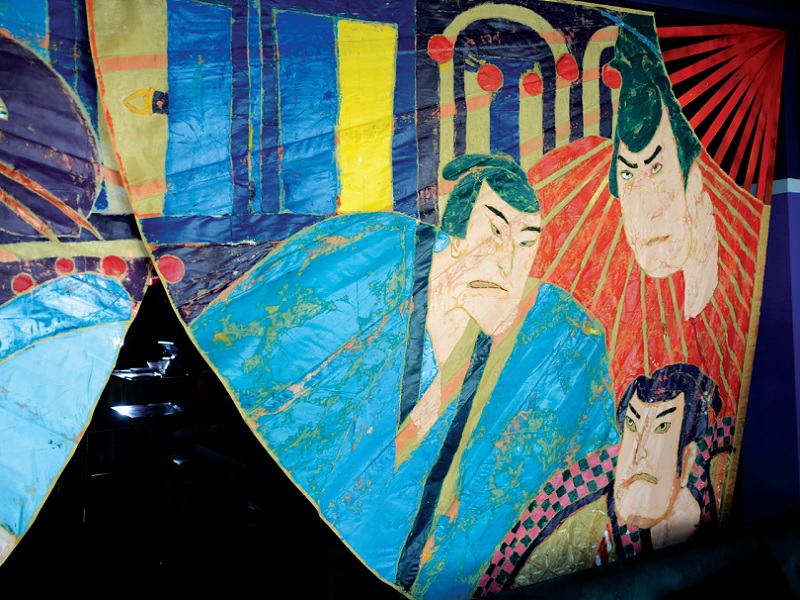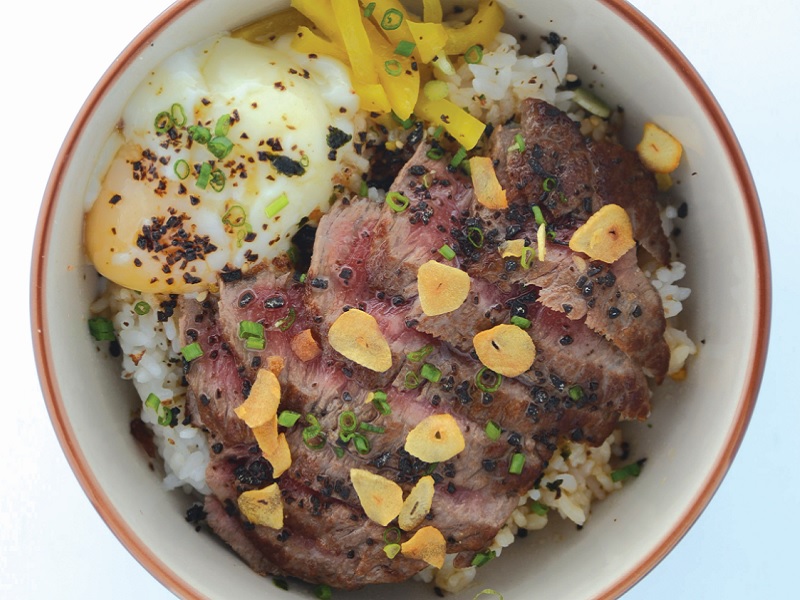The Theatrical Art of Sake: Kabuke
by Qian Leung
@ 02 Feb 2018

The imposing painted faces of kabuki actors burst into your face as you step into the interiors of
Kabuke. The theatrical ambience surely makes the tasting of sakes – identified by their places of origin as well as levels of dryness, lightness, and acidity – more delicious. Flavours range from white blossoms, lychee, pear, white peaches, and cream, to rice, banana, mango, cotton candy, and pineapple. To encourage you to step out from your comfort zone and sample more sakes, a cheese platter has been created, featuring a hard, nutty cheese, a semi-soft, creamy cheese, and a soft, mellow cheese paired with sakes such as Jozen Mizunogotoshi (as yielding as water), Tengumai (dancing mountain goblin), and Ichinokura (Ichino Brewery).

“One thing sake can do that wine cannot is to intensify certain food flavours because of the presence of umami,” says sake sommelier Kenji Heng, formerly of Bar Ippudo, which specialises in sake. “Along with the clean, crisp, and light bitterness, the savoury notes bring out the richness and underlying sweet crystalline flavours of the cheeses.” Dassai (otter festival), paired with a shiso tempura with scallop and truffle shoyu, has pretty floral, peach, and unripe pear notes, while Zaku Gen No Tomo (work of mysterious wisdom), served with wagyu don, has notes of tropical fruits and rich rice umami.

“For the rice bowl, my intention is for the koshihikari rice from Nigata to soak up the flavours of the truffle and garlic oil shoyu,” says Chef Rio Neo, 35, whose favourite sake is Tatenokawa (castle brook), which is sweet, with a gentle and smooth finish. “For the shiso tempura, I designed it to be light, as shiso leaf serves as a palate cleanser, while ikura salmon roe and black lumpfish caviar add crunch and a burst of flavours.” Because he likes to eat vegetables, he decided to make baby corn the star for an appetizer, enlivened with a mayo made with Vietnamese American hot sauce, sriracha, Japanese furikake seasoning, and local pork floss. This is served with Jozen Mizunogotoshi (as yielding as water), which is known for its lightness and clean finish.

Look out also for takoyaki fries, diced octopus, ikura salmon roe, and ebiko flying fish roe on shoe-string fries with melted cheese, takoyaki sauce, kewpie mayo and bonito flakes, and crispy goma goma wings, sesame flavoured chicken wings served with an egg mayo wasabi yuzu dip. You could also put together your own mini umami bomb, with a base of Japanese rice, pickles, and seaweed, topped with green onion and fatty tuna, or perhaps iberico jamon, smoked salmon, or flash-seared tuna takaki, and finished with salted egg fish skin, truffle shoyu, honey ponzu, or garlic shoyu. Depending on your mood, the occasion, and whether you’re having food, your choice of sake may differ. If you’d like to familiarise yourself with the complex and refined flavours of different types of sake, and learn about the different brewing regions, visit Kabuke, and let its diverse collection of sakes take you on a journey across Japan.
Adapted from the Jan Feb 18 issue of Cuisine & Wine Asia.
 The imposing painted faces of kabuki actors burst into your face as you step into the interiors of Kabuke. The theatrical ambience surely makes the tasting of sakes – identified by their places of origin as well as levels of dryness, lightness, and acidity – more delicious. Flavours range from white blossoms, lychee, pear, white peaches, and cream, to rice, banana, mango, cotton candy, and pineapple. To encourage you to step out from your comfort zone and sample more sakes, a cheese platter has been created, featuring a hard, nutty cheese, a semi-soft, creamy cheese, and a soft, mellow cheese paired with sakes such as Jozen Mizunogotoshi (as yielding as water), Tengumai (dancing mountain goblin), and Ichinokura (Ichino Brewery).
The imposing painted faces of kabuki actors burst into your face as you step into the interiors of Kabuke. The theatrical ambience surely makes the tasting of sakes – identified by their places of origin as well as levels of dryness, lightness, and acidity – more delicious. Flavours range from white blossoms, lychee, pear, white peaches, and cream, to rice, banana, mango, cotton candy, and pineapple. To encourage you to step out from your comfort zone and sample more sakes, a cheese platter has been created, featuring a hard, nutty cheese, a semi-soft, creamy cheese, and a soft, mellow cheese paired with sakes such as Jozen Mizunogotoshi (as yielding as water), Tengumai (dancing mountain goblin), and Ichinokura (Ichino Brewery).



